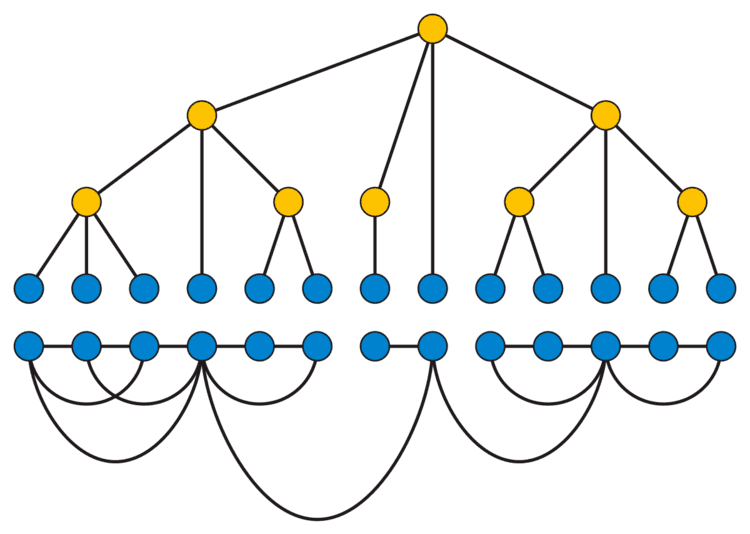 | ||
In the mathematical area of graph theory, a k-leaf power of a tree
Contents
A graph is a leaf power if it is a
Related classes of graphs
Since powers of strongly chordal graphs are strongly chordal and trees are strongly chordal, it follows that leaf powers are strongly chordal graphs. Actually, leaf powers form a proper subclass of strongly chordal graphs; a graph is a leaf power if and only if it is a fixed tolerance NeST graph and such graphs are a proper subclass of strongly chordal graphs.
In Brandstädt et al. (2010) it is shown that interval graphs and the larger class of rooted directed path graphs are leaf powers. The indifference graphs are exactly the leaf powers whose underlying trees are caterpillar trees.
The k-leaf powers for bounded values of k have bounded clique-width, but this is not true of leaf powers with unbounded exponents.
Structure and recognition
A graph is a 2-leaf power if and only if it is the disjoint union of cliques (i.e., a cluster graph).
A graph is a 3-leaf power if and only if it is a (bull,dart,gem)-free chordal graph. Based on this characterization and similar ones, 3-leaf powers can be recognized in linear time.
Characterizations of 4-leaf powers are given by Rautenbach (2006) and Brandstädt, Le & Sritharan (2008), which also enable linear time recognition.
For k > 5 the recognition problem of k-leaf powers is open, and likewise it is an open problem whether leaf powers can be recognized in polynomial time.
